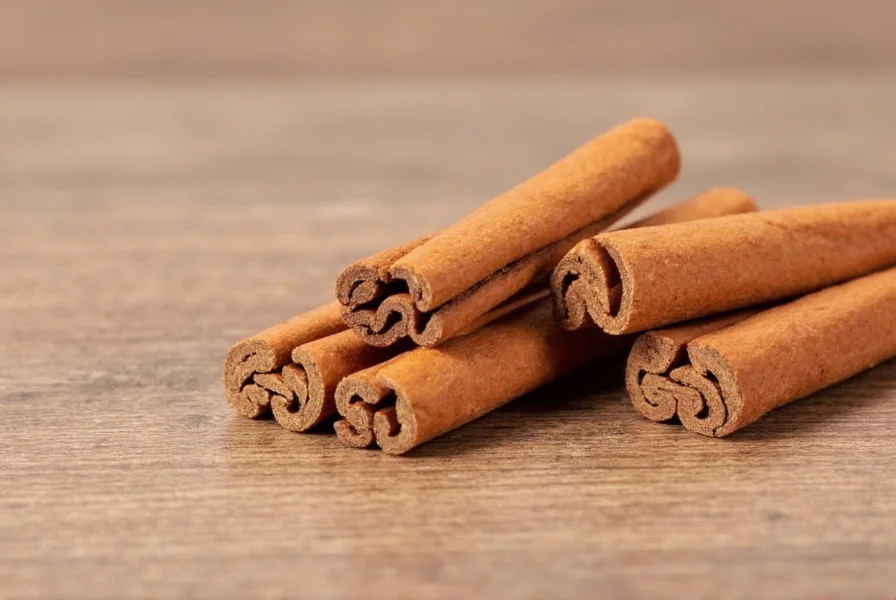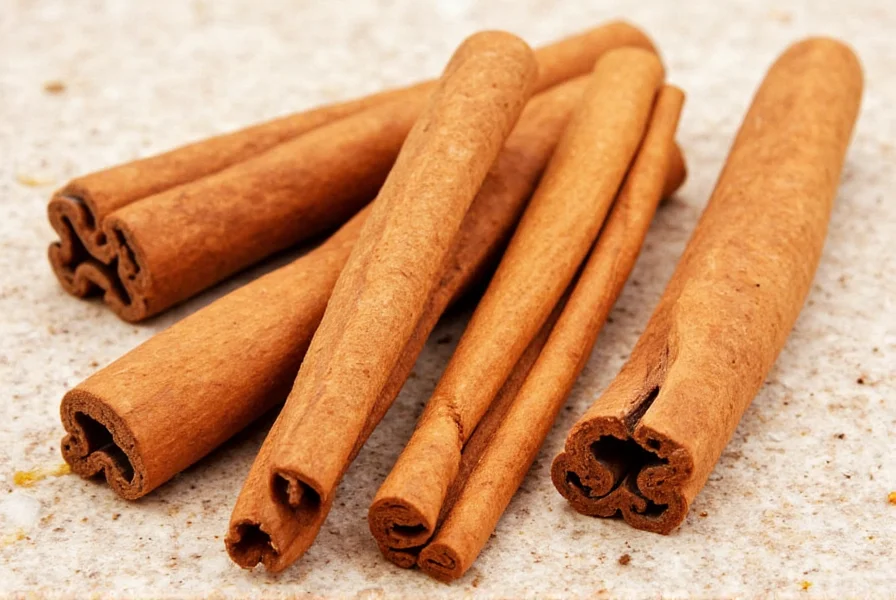Many home cooks and food enthusiasts wonder whether cinnamon qualifies as a spicy ingredient. The confusion stems from cinnamon's distinctive sensation that feels warm or hot in the mouth, yet it operates through a completely different mechanism than traditional spicy foods. Understanding this distinction helps cooks use cinnamon more effectively in both sweet and savory applications.
The Science Behind Cinnamon's Warming Sensation
Cinnamon's characteristic warmth comes primarily from cinnamaldehyde, which makes up 60-90% of cinnamon's essential oil. Unlike capsaicin in chili peppers that activates TRPV1 receptors (responsible for heat sensation), cinnamaldehyde stimulates different neural pathways that create a warming rather than burning sensation.
This chemical difference explains why you don't experience the same lingering burn from cinnamon that you would from hot peppers. The sensation typically dissipates within minutes, making cinnamon versatile for both dessert and savory dishes where subtle warmth enhances flavor complexity without overwhelming heat.
| Spice Type | Active Compound | Heat Level (Scoville) | Sensation Duration |
|---|---|---|---|
| Cinnamon | Cinnamaldehyde | 0 (non-pungent) | 2-5 minutes |
| Jalapeño Pepper | Capsaicin | 2,500-8,000 | 10-30 minutes |
| Cayenne Pepper | Capsaicin | 30,000-50,000 | 20-60 minutes |
| Black Pepper | Piperine | 100-500 | 5-15 minutes |
Culinary Applications: Using Cinnamon's Warming Properties
Chefs worldwide leverage cinnamon's warming quality to create balanced flavor profiles. In Middle Eastern and North African cuisines, cinnamon frequently appears in savory spice blends like ras el hanout and baharat, where it complements genuinely spicy ingredients without dominating the dish.
When developing recipes that combine cinnamon with truly spicy elements, consider these professional techniques:
- Add cinnamon early in cooking to mellow its intensity in curries and stews
- Pair with black pepper (which contains piperine) for layered warmth
- Balance with acidic components like citrus or vinegar to prevent overwhelming warmth
- Use in moderation with chili-based dishes to create complex heat profiles
For those exploring how to incorporate cinnamon in spicy recipes, try adding 1/4 teaspoon of ground cinnamon to tomato-based sauces with chili flakes. The cinnamon enhances the overall flavor complexity while softening the sharp edges of the chili heat.

Health Considerations and Safety
While cinnamon's warming sensation feels intense, it generally poses fewer risks than genuinely spicy ingredients. However, excessive consumption can cause mouth irritation or allergic reactions in sensitive individuals. The European Food Safety Authority recommends limiting cassia cinnamon intake to 1 teaspoon daily due to coumarin content.
Those exploring cinnamon warming sensation explained from a physiological perspective should know that the sensation activates TRPA1 receptors rather than the TRPV1 receptors triggered by capsaicin. This different neural pathway explains why cinnamon's warmth feels distinct from pepper-based heat.
Common Misconceptions Clarified
Many people searching for is cinnamon considered spicy encounter misleading information. Cinnamon doesn't register on the Scoville scale because it lacks capsaicinoids. Its warmth comes from a different biochemical mechanism entirely.
Understanding the difference between spicy and warming spices helps cooks create more nuanced dishes. While chili peppers deliver immediate, sharp heat that builds, cinnamon provides a gradual warmth that complements rather than competes with other flavors.
Practical Pairing Suggestions
For those experimenting with cinnamon heat level compared to chili, try these combinations:
- Mexican chocolate chili: Combine 1/2 teaspoon cinnamon with 1/4 teaspoon cayenne in hot chocolate
- Moroccan carrot soup: Add 1/4 teaspoon cinnamon to balance 1/2 teaspoon harissa paste
- Spiced coffee rub: Mix 1 teaspoon cinnamon with 1/2 teaspoon black pepper for steak
These applications demonstrate how understanding why does cinnamon feel hot allows for more intentional spice usage in cooking. The warming quality enhances rather than overwhelms, creating dishes with greater depth and complexity.
Is cinnamon actually spicy like chili peppers?
No, cinnamon isn't technically spicy. It creates a warming sensation through cinnamaldehyde rather than the capsaicin that makes chili peppers spicy. This warmth feels different from the burning sensation of genuinely spicy ingredients and dissipates more quickly.
Why does cinnamon feel hot in my mouth if it's not spicy?
Cinnamon contains cinnamaldehyde, which activates TRPA1 receptors in your mouth. This creates a warming sensation that's often mistaken for spiciness, but it works through a different biological mechanism than the capsaicin in hot peppers that triggers TRPV1 receptors.
Can I substitute cinnamon for spicy ingredients in recipes?
Not directly. Cinnamon provides warmth rather than heat, so it won't replicate the burning sensation of chili peppers. However, you can use cinnamon to complement spicy ingredients, creating more complex flavor profiles. For authentic heat, you'll still need capsaicin-containing ingredients like chili peppers.
Does the type of cinnamon affect its warming properties?
Yes. Ceylon cinnamon (true cinnamon) contains less cinnamaldehyde and produces a milder warmth than Cassia cinnamon, which is more common in supermarkets. Cassia typically creates a stronger warming sensation due to its higher cinnamaldehyde content (60-90% versus 50-60% in Ceylon).
Frequently Asked Questions
Is cinnamon actually spicy like chili peppers?
Cinnamon isn't technically spicy. It creates a warming sensation through cinnamaldehyde rather than the capsaicin that makes chili peppers spicy. This warmth feels different from the burning sensation of genuinely spicy ingredients and dissipates more quickly.
Why does cinnamon feel hot in my mouth if it's not spicy?
Cinnamon contains cinnamaldehyde, which activates TRPA1 receptors in your mouth. This creates a warming sensation that's often mistaken for spiciness, but it works through a different biological mechanism than the capsaicin in hot peppers that triggers TRPV1 receptors.
Can I substitute cinnamon for spicy ingredients in recipes?
Not directly. Cinnamon provides warmth rather than heat, so it won't replicate the burning sensation of chili peppers. However, you can use cinnamon to complement spicy ingredients, creating more complex flavor profiles. For authentic heat, you'll still need capsaicin-containing ingredients like chili peppers.
Does the type of cinnamon affect its warming properties?
Yes. Ceylon cinnamon (true cinnamon) contains less cinnamaldehyde and produces a milder warmth than Cassia cinnamon, which is more common in supermarkets. Cassia typically creates a stronger warming sensation due to its higher cinnamaldehyde content (60-90% versus 50-60% in Ceylon).











 浙公网安备
33010002000092号
浙公网安备
33010002000092号 浙B2-20120091-4
浙B2-20120091-4